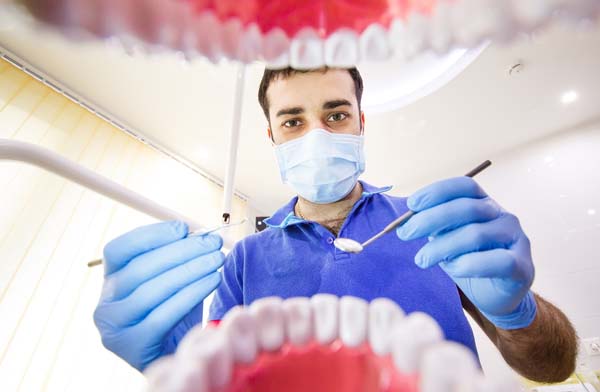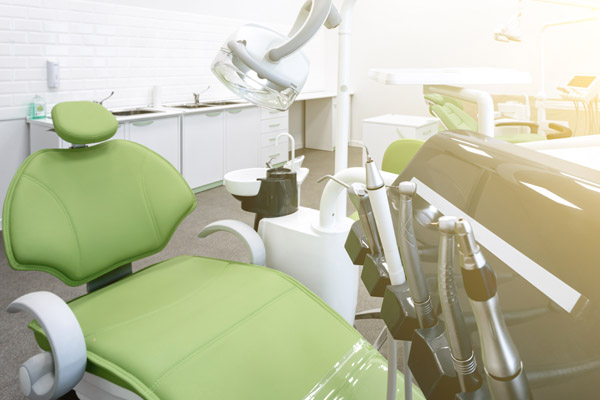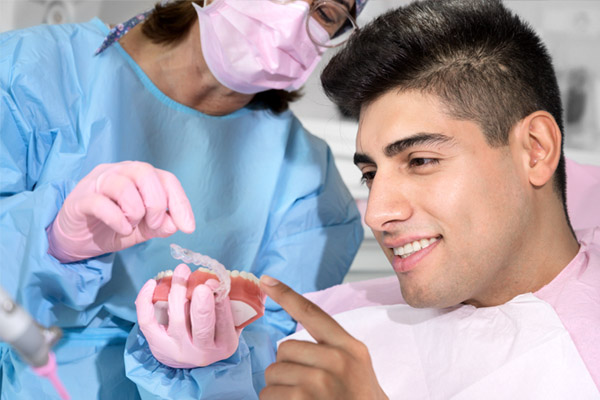Orthodontist Treatments for Crowded Teeth

Crowded teeth, in which too-closely spaced teeth result in overlapping, bunching, and twisting, can be both an aesthetic and a practical problem. An orthodontist may recommend several treatments to reduce crowding and improve tooth alignment.
What causes crowded teeth?
Genetics is a significant factor in whether an individual has crowded teeth. Some individuals have unusually large teeth or atypically small jaws, which can lead to crowding as adult teeth grow in. Crowding can also result from abnormalities around the loss of baby teeth, including losing baby teeth unusually early or having baby teeth fail to fall out in a standard fashion. In some cases, crowding can result from prior injury or unique dietary habits.
The type of tooth crowding is distinct for different individuals. Crowding can be either mild, moderate, or severe. In cases of mild crowding, only one tooth is improperly rotated; in cases of severe crowding, this may apply to most teeth in the mouth.
Types of crowded teeth
Overcrowding of the lower teeth is quite prevalent. Crooked lower teeth are common and may have several different causes. Accidents, traumas, and even habits like thumb sucking may shift teeth out of place, so misalignment is not always a result of heredity.
Correcting mild crowding in the upper or lower jaw is necessary for proper tooth development and jawbone health. A palatal expander is one option for treating overcrowding that may help avoid the need for orthodontic treatment. Visible expanders might take nine to 12 months to correct the issue completely. This issue can be fixed while the baby teeth are still in the mouth and can prevent crowding of the adult teeth. In extreme cases, the orthodontist may recommend removing teeth to make room for braces, but this is typically a last resort.
One condition is known as anterior crowding, where the four central teeth on either the upper or lower jaw are crooked. Since the incisors are some of the most prominent teeth while smiling, patients often claim that increased self-esteem is a driving factor for undergoing treatment. Realigning the incisors can also make brushing and flossing easier if patients are simply concerned about their oral health.
How can orthodontic treatment fix crowded teeth?
An orthodontist is a dental professional who focuses on misalignment in the teeth and jaw. They use various techniques to treat teeth crowding, depending on the nature and severity of the specific patient's issue.
Braces
Braces are a common and well-known method of treating crowded teeth. In their most typical form, metal braces involve brackets bonded to teeth and connected by wires and may include supplementary features, such as rubber bands. Individuals of any age may wear braces, but they are particularly common in adolescents, as the jaws and facial bone structure are still developing. Braces may be worn for anywhere from several months to several years, depending on the seriousness of an individual's misalignment.
Retainers
Retainers are custom-made devices, often made of plastic and wire, that are designed to hold teeth in place. While retainers can be helpful in managing mild crowding and are frequently prescribed after braces are removed, they are insufficient to address severe teeth crowding.
Clear aligners
Clear aligners are alternatives to braces that have grown in popularity over the last several decades. These plastic trays are worn for most of the day and like standard metal braces, work to correct teeth crowding. Their removable and transparent nature makes them popular as a less-visible form of teeth correction.
Veneers
Veneers are composite additions to teeth that essentially provide a more aligned appearance. However, veneers do not move teeth and are unlikely to affect substantial crowding.
Dentofacial orthopedics
Dentofacial orthopedics comprise more intense interventions for severe crowding issues. Treatments may include headgear or in some cases, oral surgery.
The importance of treatment
Too much pressure on one's teeth might cause significant pain. Many dental issues are caused by teeth grinding together or a crooked bite. Aside from the aesthetic aspects, it is harder to clean crowded teeth. Patients may also experience discomfort in several locations, even if the malocclusion only affects a small number of teeth. See an orthodontist as soon as possible to discuss options for alleviating the discomfort.
Conclusion
An orthodontist can help address issues regarding tooth crowding. It is important to remember that crowded teeth are not just an aesthetic issue. Crowding can lead to gum and mouth diseases, jaw strain, headaches, and even problems with basic functions like chewing and speaking. Individuals struggling with teeth crowding should consult an orthodontist to discuss available treatment options.
Request an appointment here: https://www.orthodonticprecision.com or call Precision Orthodontics & Pediatric Dentistry at (703) 391-8800 for an appointment in our Reston office.
Check out what others are saying about our dental services on Yelp: Orthodontist in Reston, VA.
Recent Posts
Invisalign® for teens is an invisible straightening tool for your children's teeth. Invisalign uses custom, clear aligners to straighten teeth. Patients receive Invisalign aligners every two weeks. The custom trays move teeth gradually.When most people think about metal braces, they may think about teenagers. However, not all teenagers require traditional braces. Some teenagers may benefit…
Invisalign® for teens can offer adolescents a more comfortable and more discreet option for straightening their teeth. For years, braces were one of the only options for effectively treating a crooked smile. Even though Invisalign® has been providing an alternative for decades, some people may not be familiar with who it is for and how…
Like many young people, your teenager may have crooked teeth or bite problems that need correcting. Your dentist may recommend Invisalign® as a treatment option for your teen. Maybe you are familiar with traditional braces — perhaps you wore them yourself when you were younger. However, Invisalign can correct your teen's orthodontic issues while offering…
Many families with adolescents in need of straighter smiles are opting for Invisalign® for teens over traditional braces. Braces use wires and frequent adjustments to straighten each tooth individually. Invisalign clear aligners straighten all the teeth at once and are swapped out for new ones about every two weeks during the process. These aligners are…


